If you’re concerned about preventing or minimizing the signs of aging like hyperpigmentation, fine lines, wrinkles, saggy skin, etc., then this blog post is for you. We are going to be sharing 9 tips to follow.
We’re here to help you understand your skin and find products that work for you.
Before we delve into these anti-aging tips, we do want to take a second to talk about the term “anti-aging” because it gives all of us a bit of an ick. It’s because we are actually pro-aging. We want to be getting older and to live long, healthy, happy lives. But we don’t necessarily want our appearance to reflect the fact that we are having more birthdays. Yes, that somewhat comes from societal pressure to look youthful, however most people look disconnected between how youthful, vibrant, and vital they feel versus how they look.
It’s a much more internally driven motivation than we ever realized because people are looking at themselves in the mirror, feeling like they are still in their 20s or 30s, but looking back at them is someone in their 50s or 60s, and that can really mess with your psyche. So, the reason we’re giving these anti-aging tips is so that there can be more harmony between how you look and how you feel.
We’re not telling you that you have to look younger or that you have to take this anti-aging advice. If you are happy with your appearance and okay with looking older, that is totally fine. But for people who are looking to optimize the aging process, at least from a cosmetic standpoint, then this blog post is for you, no matter what your motivations may be.
Table of Contents
Tip 1: Sunscreen and Sun Protection
Absolutely no surprise to you, and it’s to wear sunscreen. We kind of feel like if you’re reading this blog post, you already understand the value of sunscreen and the importance of wearing it pretty much every single day. But we find that in our conversations when we’re talking to community members about their sun-protective habits, a lot of them are not wearing sunscreen regularly. They say, “Oh yeah, when I’m outside, when I’m doing outdoor activities, when I’m on the boat or whatever,” but the reality is, it’s all of these little incidental sun exposures over your day. Whether that’s walking to the car, getting groceries, or picking your kid up at school and standing outside in the pickup line for 10 or 15 minutes, all of that sun exposure adds up over your lifetime and can contribute to premature skin aging.
You can also read our blog posts about 10 Sunscreen Mistakes and Best Sunscreens for Dry, Oily and Sensitive Skins to learn more about sunscreen tricks in detail.
When your skin is repeatedly exposed to UV radiation emitted by the sun, it damages the structural support proteins within your skin, and it damages the DNA, which affects your skin’s ability to renew and regenerate itself optimally. UV radiation also turns on certain pathways within the skin that lead to excessive pigment formation as well as inflammation within the skin. So, that’s what’s happening microscopically to skin repeatedly exposed to UV radiation. Macroscopically, or what the skin looks like to the naked eye, is increased sallowness, dullness, texture, fine lines, wrinkles, skin laxity, irregular pigmentation formation—all essentially signs of premature skin aging.
Depending on what study you’re looking at, somewhere between 80 and 90 percent of skin aging is due to UV radiation exposure. There’s this photo of a truck driver that went viral a little while ago because what it shows is that this person, who spent most of their life as a truck driver, has extreme aging on one half of their face, and the other side just looks like normal aging. That’s because that extremely aged side was the driver’s side window that was chronically exposed to UV radiation. We feel like this really illustrates the power of the sun in terms of affecting how your skin ages.
So that is a variable that we have a good degree of control over. We’re not saying you need to eliminate all sun exposure—that’s not reasonable, and that’s no way to live—but if you just limit it with UV protection, whether that’s sunscreen or UV-protective clothing, you can greatly influence how your skin ages.
Daily application of sunscreen is not just about preventing signs of premature skin aging. It has also been shown to reverse signs of skin aging. There’s a pretty famous sunscreen study in which people were asked to wear sunscreen every day for a year, and those people showed improvement in clarity, texture, and other signs of premature skin aging just by wearing sunscreen.
So, if you didn’t wear sunscreen when you were younger and you feel like there’s no point in doing it now because all the damage has been done—false! You can still reverse some signs of skin aging by picking up that daily sunscreen habit. We recommend getting in the habit of putting on sunscreen every single morning. You might not need that protection every single day because you’re staying inside and you’re not near windows, or it’s rainy or super cloudy outside, and your UV exposure is pretty minimal. But if you put it on every single day and make it your habit, then you will always be protected, and you never really have to worry about it.
And then, of course, if you’re spending time outdoors or you’re sweating or doing other activities, then you can reapply. But just getting that initial coat of sunscreen on in the morning will change how your skin ages for the better.
If you haven’t found a sunscreen that you love yet, don’t be discouraged. Sometimes you have to kiss a few frogs or try a few sunscreens before you find one that you love. We have lots of blog posts here that talk about our personal favorites, so maybe you want to try one of those.
A lot of times we get the question, “Well, what’s the best sunscreen?” And what we will say, it is the best sunscreen is the one that you will wear repeatedly and be motivated to use. So ideally, we like something that’s SPF 30 or higher, something that’s broad spectrum, but beyond that, it’s totally up to you and your preferences.
Sunscreen is great, but it’s not perfect, and it’s just one part of a sun protective regimen.

Australia has their “Slip, Slop, Slap, Seek, Slide” campaign, which we think is an amazing way to remind yourself of all the ways you can protect from the sun. So that stands for: slip into UV protective clothing, slop on SPF 30 or higher sunscreen, slap on a wide-brim hat, seek shade, and slide on sunglasses.
It might not be feasible for you to do all of these things every single time you’re spending time outdoors, but if you get in the habit of incorporating more of these sun-protective methods into your daily routine, the better off your skin will be in the long run.
Tip 2: Use Retinoids
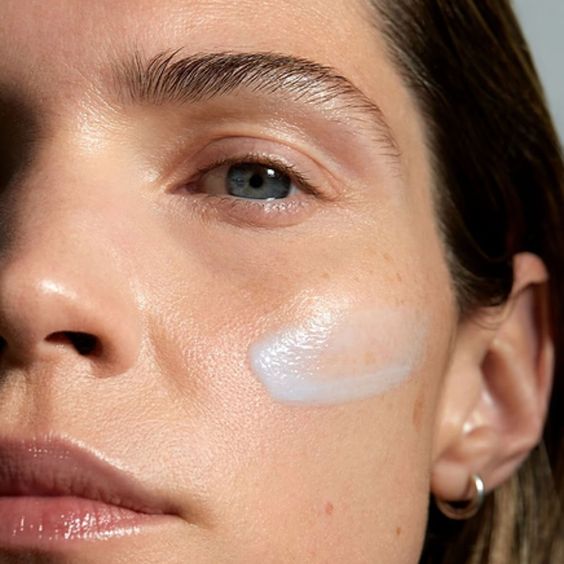
Our third tip is to start incorporating a topical retinoid into your face and body skincare routine. Retinoids are a category of skincare ingredients. Under that category fall ingredients like retinol and retinaldehyde, which you can find in over-the-counter products, as well as prescription-strength retinoids like tretinoin and tazarotene.
You can also read 6 Best Tips to Start Using Retinol and 5 Best Retinol Products for Sensitive Skin blog posts to learn more about this topic.
We have many blog posts that discuss retinoids and their benefits, as well as give retinoid product recommendations. But the gist of what retinoids can do for your skin from an anti-aging perspective is that they increase collagen formation and decrease collagen breakdown. This leads to thicker, stronger, healthier-appearing skin with fewer fine lines and wrinkles.
Retinoids also increase the rate of cellular turnover within the skin, which helps with things like dullness and sallowness, as well as correcting irregular pigmentation.
Even if we’ve never met someone before, we can often tell if they use a retinoid in their skincare routine because their skin has this beautiful glow and vibrancy that is very hard to achieve with any other type of skincare ingredient.
We feel like a lot of people are really good at using a topical retinoid on their face, and maybe they’re even extra and use it on their neck, chest, and hands—beautiful! But not as many people are using retinoids in their body care. Anti-aging isn’t just about your facial skin. Although your face is what you’re looking at every single day, what we find is that as people age, they start to get concerned about other areas on their body. They start to notice crepey skin or sagging skin on their arms or legs, especially when you get to be perimenopausal or even post-menopausal and you don’t have those positive effects of estrogen in the skin. That’s where a retinol body cream can be extra helpful.
We’ve not spoken as much about retinol or retinoid products for the body. The one that we’ve been using the most lately is by Naturium, but we think that this makes our skin just feel so good. It’s kind of like a mid-weight lotion, so it’s not like a full-on body butter or body cream, but it still has a very hydrating and nourishing effect. So, if you’re looking to up your retinoid game and increase it to not just facial application but to an entire body application, it might be worth a shot.
Tip 3: Consider In-Office Treatments
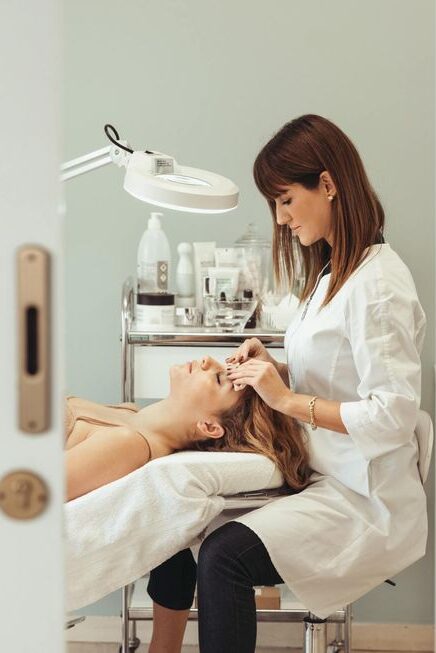
Anti-aging tip number four is to consider having in-office treatments. We feel like sometimes people are looking for anti-aging advice that they can do at home on their own, and that’s totally fine, but we think it would be a huge disservice to give the illusion that you can achieve all of the anti-aging things that you want just with good skincare and lifestyle changes. Those are, of course, extremely important and serve their role, but there are some things that you just need a little more technology to achieve, and that can really only be done in the office by a professional.
When it comes to in-office procedures, there’s such a huge range. There are injectables like Botox and fillers that are used to help with fine lines and wrinkles and some restructuring of the face. There are surgical interventions like facelifts, eyelid surgery, and fat grafting. There are skin resurfacing procedures like lasers, radiofrequency microneedling, and chemical peels, and each does something a little bit different.
The world of cosmetic dermatology and plastic surgery can be really overwhelming, and a lot of times people ask, “What’s the best?” Well, there is no best. When we age, we age in different ways, and we age in different planes of the face, meaning that our skin ages, our muscles age, our fat layer changes, and our bony structure changes. So depending on how your face is aging, that might require interventions with multiple different modalities to achieve the most balanced and harmonious result.
Some people are hesitant to pursue cosmetic interventions to address their aging concerns because they see, in their day-to-day life, people who look unnatural, or they see that in celebrity culture or pop culture. But the reality is, there are lots of people who walk among us who’ve had amazing work done, and you just can’t tell. If it’s good work, you don’t see it. When you see someone who looks a little bit distorted or overdone, it’s often because they’ve leaned too heavily into one or two types of interventions. For example, maybe they’ve done a lot of filler when, in reality, they also needed to be focusing on tissue tightening and skin resurfacing.
We say this because if you’re considering some type of cosmetic intervention, the first thing you’re going to do is have a cosmetic consultation. It can be really hard to choose a cosmetic provider and to figure out who’s going to treat you and how. But in that cosmetic consultation, we always ask people to look for what they are offering. Are they just offering you Botox and fillers? What do they have access to? Do they have access to laser resurfacing? Do they refer people out to surgery if that’s truly what’s needed? The more comprehensive someone’s training is, the more tools they have access to, and the more other doctors they are connected to and can bring into their network to help a patient, usually the better your outcomes are going to be.
Also, keep in mind that if you’re doing cosmetic interventions, you don’t have to do a lot all at once. You can do little tweaks periodically, and we often find that people who age the most gracefully with a little bit of assistance are often doing things frequently, but not doing a lot with each intervention. This, of course, will have to do with your unique aging situation and how old you are.
For example, if you are in your 30s and have a lot of sun damage from growing up. Your anti-aging regimen involves getting Botox a few times a year to help with the lines that like to form between our brows, around our eyes, and on our forehead, as well as doing some light laser resurfacing a few times a year to help with collagen formation and evening out our skin tone.
For someone in their 40s, 50s, or 60s, their anti-aging regimen in terms of procedures might look a little bit different. They might be doing Botox with the same regularity, but maybe they’ve added filler a couple of times a year. Maybe they get a facelift and then start doing other things like lasers and skin resurfacing afterward to maintain those results. It’s really different for each person, and it’s so important to have a plan that’s tailored to you, your skin, your face, and your goals.
Tip 4: Be Mindful on Your Facial Movements

Be mindful of certain repeated movements that you make with your face, as these can lead to premature wrinkling. For example, do you always find that when you are on a Zoom call or reading something critically, you scowl and furrow your brow, causing little lines between your brows to form? Or when you are outside, do you squint into the sun, leading to the premature formation of crow’s feet? Do you drink out of a straw on a regular basis? This can cause vertical lip lines, which is one of the biggest complaints we hear from women who are 40 and above.
Another common place this will show up is on the neck, as horizontal necklines form from looking down when we’re reading, on our phones, or even sleeping on our sides and tucking our chin. It’s very hard to prevent all of this, right? We have to live our lives, and we can’t always be thinking, “How is this going to affect my aging?” That is no way to live. But if you are more cognizant of these repeated muscle movements and can reduce them in a way that makes sense to integrate into your lifestyle, it will help your face, neck, or whatever body part you’re focusing on age a little more gracefully.
In some of these areas, you can actually get Botox to help. So, if you are a chronic brow-furrower, many people start getting Botox here just to prevent those lines from ever getting really deep, because no matter how hard they try, that is such a deep habit ingrained within them that they can’t stop without a little help. You can also get Botox a little bit around the mouth to soften that pursing motion that you make with your lips, so those lip lines are less likely to form over time. There’s no perfect solution for this, but being mindful and intervening where necessary will help.
Tip 5: Earlier Intervention for Your Hair Loss
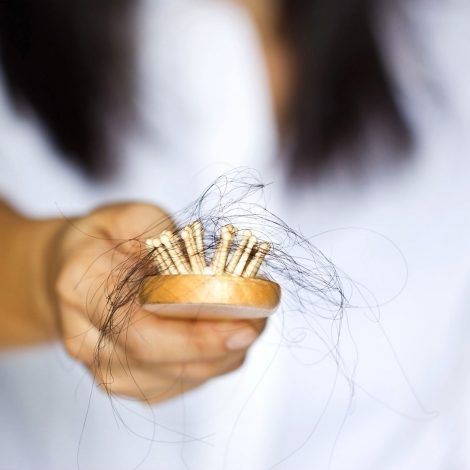
If you have female or male pattern hair loss, intervene sooner rather than later because a full head of hair is a sign of youth. Also, having pigment in your hair is a sign of youth. We know that as we get older, our hair goes from pigmented to gray, and this happens on a different timeline depending on your genetics, some other physiological factors, and maybe some medications and lifestyle choices.
Now, this is all to say that if you were to strive for a full, non-gray head of hair, you might have the most youthful appearance. But this is also to say that if going gray doesn’t bother you or having thinner hair doesn’t bother you, you don’t have to do anything. We’re not here to tell you that you must address these things. But if you’re trying to do the most when it comes to anti-aging, those are two things you could intervene upon.
It’s important to note, though, if you’re dealing with male or female pattern hair loss, that this is a chronic, ongoing condition. So, if you decide to do something about it, for example, introduce minoxidil or Rogaine to your routine on a daily basis, you will have to continue to use it daily in order to keep those results. Don’t shoot the messenger on that one, but it’s important to understand what you’re getting yourself into.
The same way that if you are exercising and you get some muscle mass that you’re excited about, you’re going to need to continue to exercise to maintain that muscle mass. If you’re growing your hair back and you’re doing some type of intervention for that, and you’re happy with it, you will need to continue that intervention to maintain that result.
Tip 6: Get Adequate Sleep
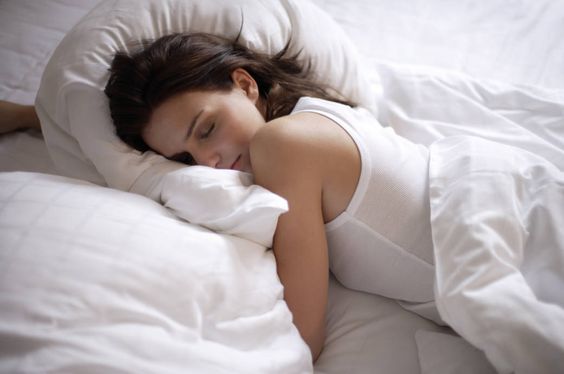
This is so much easier said than done. We completely understand this, that even if you might want to sleep more, you might not be able to because of certain things going on in your life or with your body. But the more that you can get the rest and sleep that your body needs, the healthier your skin is going to be and the younger you’re going to look. There are many studies that show how lack of sleep and tiredness negatively impact our appearance, including a study that shows diminished sleep also decreases the efficacy of our skin barrier.
Tip 7: Healthy Diet
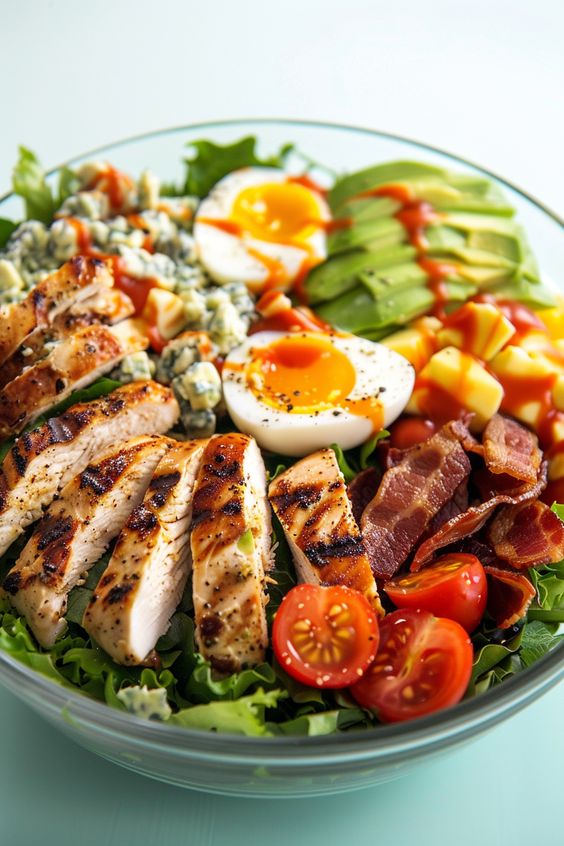
Eat whole foods and limit your intake of processed foods. Dietary science and how what you eat affects how your skin looks, feels, or acts is tricky because there are a lot of variables in that equation that affect the ultimate outcome. Something that never really seems to go out of style, although there will always be haters, is eating lots of fruits and vegetables, especially ones that are brightly colored and rich in antioxidants. These have been shown to make the skin more resilient and have anti-inflammatory effects.
There’s also some data to show that if you have a diet or a medical condition such as diabetes that leads to higher sugar levels in your tissues, that sugar can bind to the collagen molecules in your skin and make them more rigid and more fragile. Now, does that mean you need to eat a diet low in sugar? Not necessarily. That process is much more complicated than making that small tweak in your diet, but it does show that there are certain things that we want to at least be aware of and keep an eye on the data for.
You really should be eating for full-body health. When you are eating for the health of your brain, gut, and liver, the health of your skin will follow. For us, we found that what works best is eating mostly plant-based, and limiting our intake of processed foods like bread, cakes, and cookies. But again, dessert is essential for us, so it’s all about balance, right? We’re not just going to eat to be healthy; we’re going to eat for pleasure too, and it’s always important to find what balance works for you in your life.
Tip 8: Avoid Alcohol & Smoking
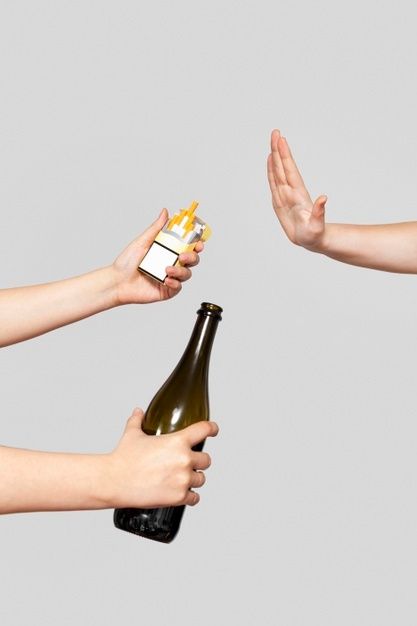
For anti-aging, don’t smoke and, ideally, limit alcohol consumption. There are numerous studies that demonstrate the negative impact on our skin that smoking has. Because of the way smoking affects collagen within our skin, it leads to things like fine lines, wrinkles, and skin sagging. Now, the connection between alcohol and how our skin ages is much less explored, but the World Health Organization just put out a statement saying that no amount of alcohol is considered safe or healthy, so we’re taking that pretty seriously.
Tip 9: Compression Socks
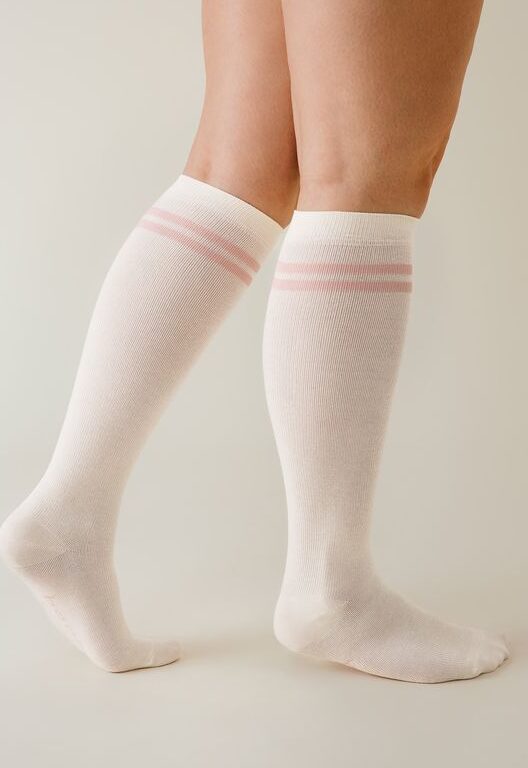
Anti-aging tip number 9 is to wear compression socks. This is particularly true if spider veins or varicose veins run in your family. These are things that age the appearance of your legs, and they’re often things you don’t think about until they show up on your skin, at which point they are much harder to treat. The more preventative you can be, which is what compression socks do, the better your legs will look in the long term. Compression socks work by putting a little hug or squeeze on the blood vessels in your legs, preventing them from dilating or popping up on the surface of your skin.
We would say that if you have a job where you are on your feet a lot, such as nursing, working in retail, or working in food service, then wearing compression socks as much as possible is going to be helpful. When you are standing, that’s when the effects of gravity really take a toll on the veins and vessels in your lower legs. Also, if you are pregnant, this is a great time to be wearing compression stockings. We see tons of varicose veins and spider veins pop up after pregnancy because your belly is essentially inhibiting the ability of blood to return from your legs back up to your heart. This causes the vessels in your legs to become distended, making them more prominent.
In a perfect world, you’d wear at least knee-high compression socks every single day. That’s not feasible for everyone, and it’s certainly not fashionable for everyone. However, we wear them every day in the clinic, where we wear scrubs because no one can see them, and it’s just an easy way to be proactive about how the skin on our legs is going to age and how our legs are going to feel. Compression socks also help with things like leg fatigue.
Could you wear thigh-high compression socks? Yes! And if you do, oh my gosh, you’re an overachiever! Go for it, but knee-high is generally enough for most people. But it’s all about consistency. Sure, you can wear them on long-haul flights or long car rides, and they will have some benefit, particularly in preventing deep vein thrombosis or a blood clot. However, if you want to prevent spider veins and varicose veins as much as possible and fight your genetics a little bit, then wearing compression socks regularly is really going to help.
These are all the anti-aging tips we have for you today. As always, thank you so much for reading. See you next time!
Disclaimer: In the name of full transparency, please note that this post contains affiliate links and any purchase made through such links will result in a small commission for us.

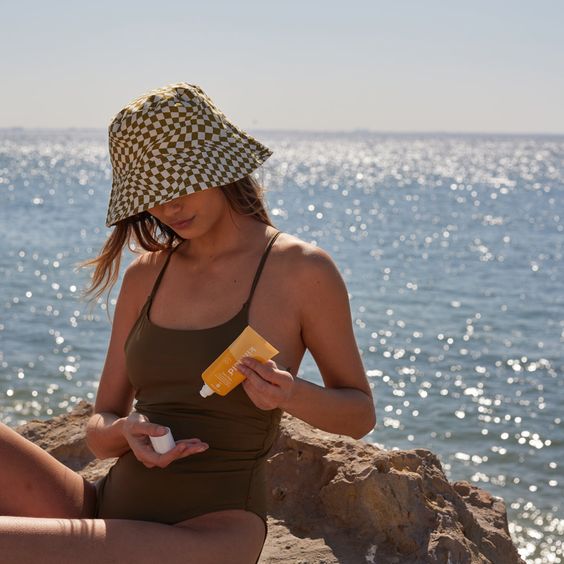

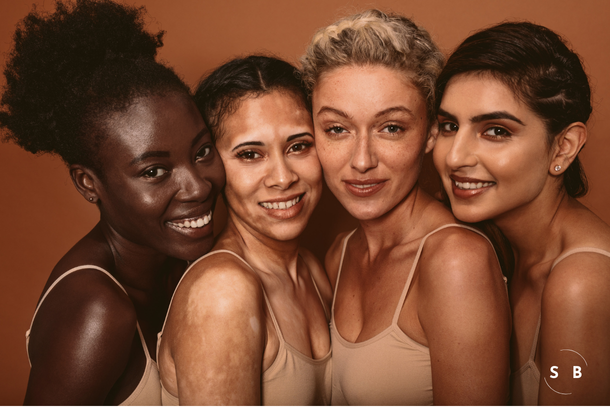
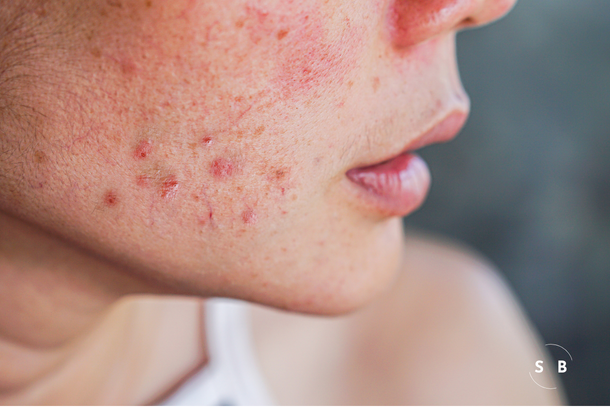
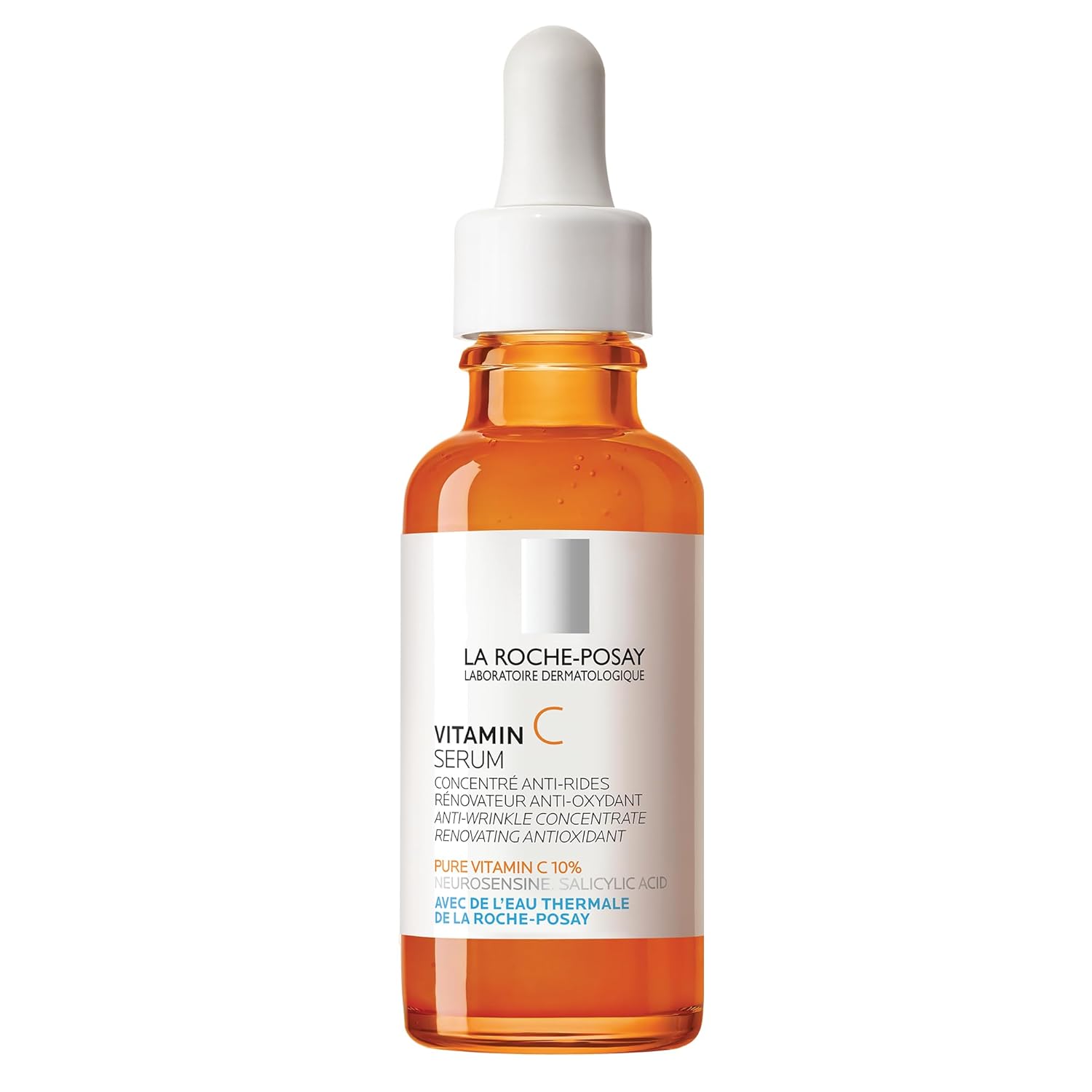
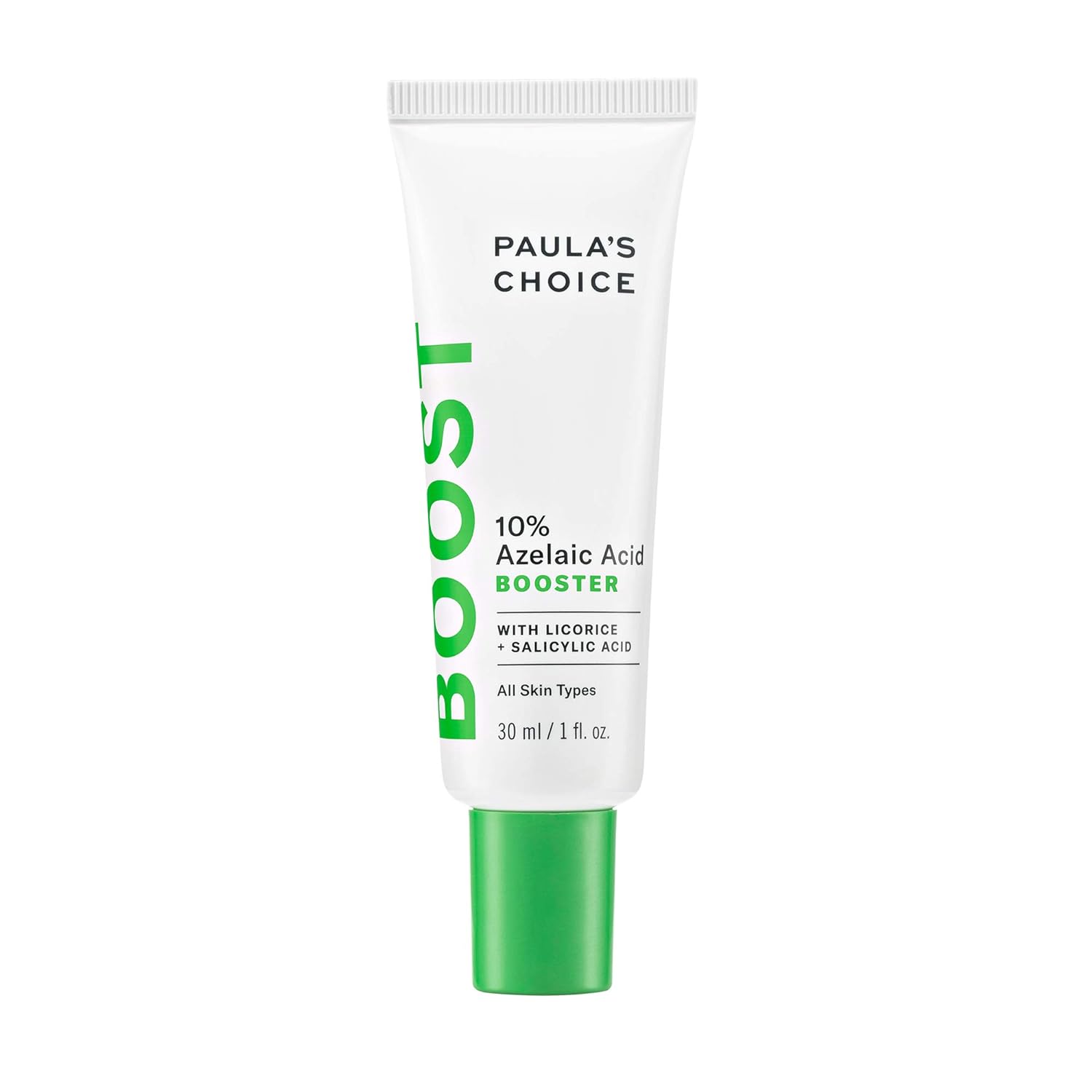
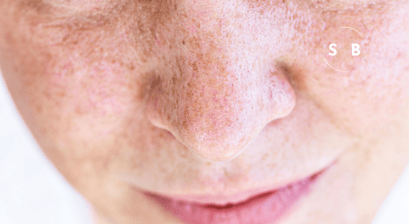
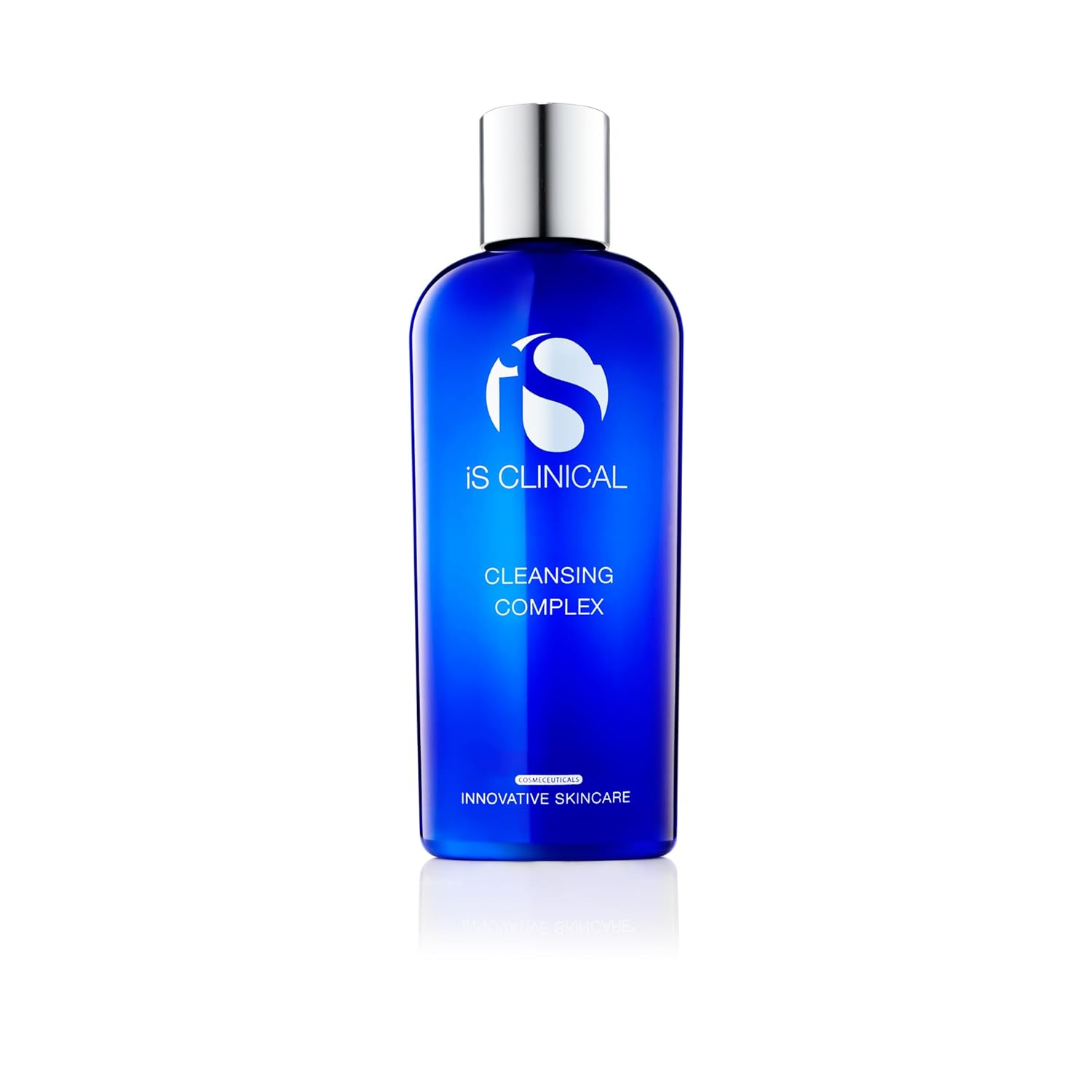
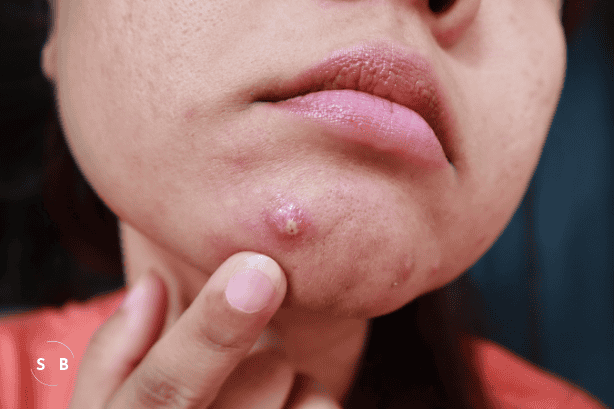
Leave a Reply